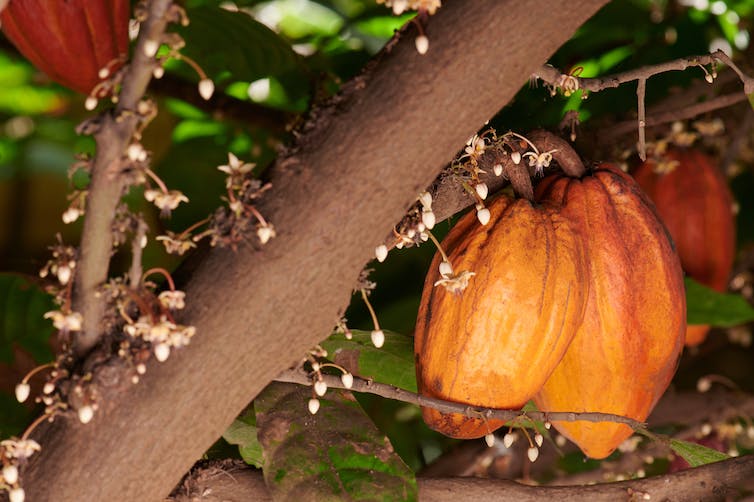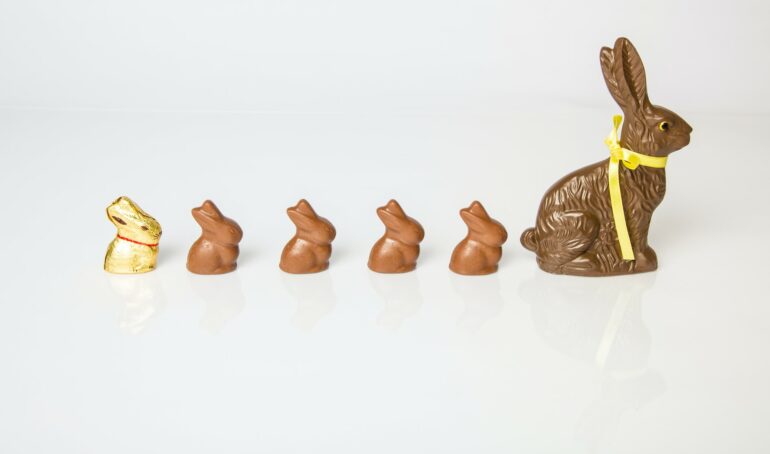Tens of millions of chocolate bunnies get sold in the U.S. every Easter. Here are six articles about chocolate from The Conversation’s archive – great reading while you’re nibbling the ears off your own bunny (if you’re one of the three-quarters of Americans who start at the top).
1. Food scientist on cocoa chemistry
Chocolate bunnies don’t grow on trees – but cacao pods do. It takes a lot of processing to get from the raw agricultural input to the finished output.
Food scientist Sheryl Barringer from The Ohio State University wrote about various chemical reactions that are part of the transformation of beans into chocolate. One is the Maillard reaction, the same thing that gives the browned bits on roasted meats or a bread’s golden crust their flavor. Barringer also explains that weird white stuff – known as bloom – that might appear on your Easter chocolates if they hang around for a while. (Don’t worry, it’s still edible.)
À lire aussi :
Chocolate chemistry – a food scientist explains how the beloved treat gets its flavor, texture and tricky reputation as an ingredient
2. Chocolate is a fermented food
Food science Ph.D. candidate Caitlin Clark from Colorado State University focuses her research on the microbes responsible for much of chocolate’s flavor. As a fermented food, chocolate depends on yeast and bacteria to help turn a raw ingredient into the treat you can recognize.
Clark described how the microorganisms that occur naturally in a given geographical location can give high-end chocolates their “terroir” – “the characteristic flair imparted by a place” you might be more used to thinking about with regard to wine.
À lire aussi :
Chocolate’s secret ingredient is the fermenting microbes that make it taste so good

Tiny flies spread pollen from one cacao tree to another.
dimarik/iStock via Getty Images Plus
3. Pollinators are important part of process
Cacao growers rely on another tiny ally to pollinate their crop. Entomologist DeWayne Shoemaker from the University of Tennessee described the mini flies – particularly biting midges and gall midges – that get the job done. “Pollinators must pick up pollen from the male parts of a flower of one tree and deposit it on the female parts of a flower on another tree,” Shoemaker wrote.
But up to 90% of cacao flowers don’t get pollinated at all. People can hand-pollinate the little flowers, but it remains a mystery which other insects might do the job in the wild.
À lire aussi :
Tiny cacao flowers and fickle midges are part of a pollination puzzle that limits chocolate production
4. Child labor is chocolate’s bitter secret
Harvesting and processing cacao is labor-intensive. To meet this need, some farmers turn to child labor. Cultural anthropologist Robert Ulin from the Rochester Institute of Technology…
